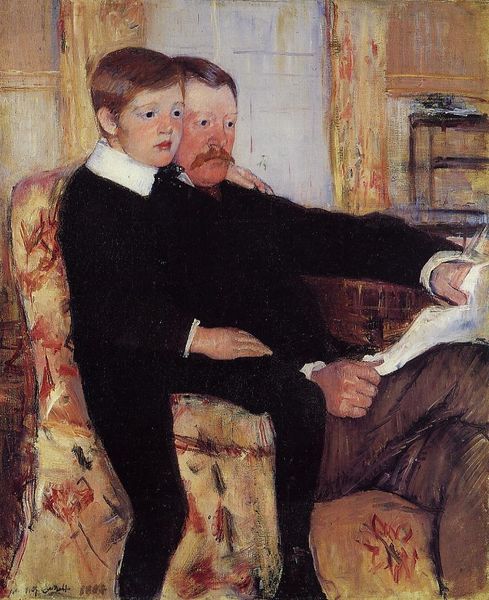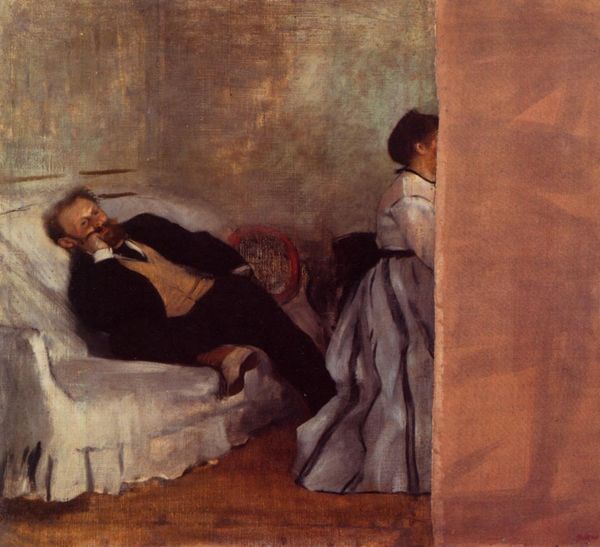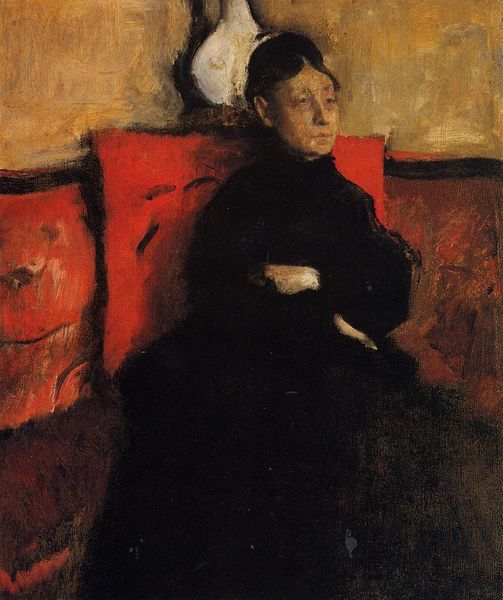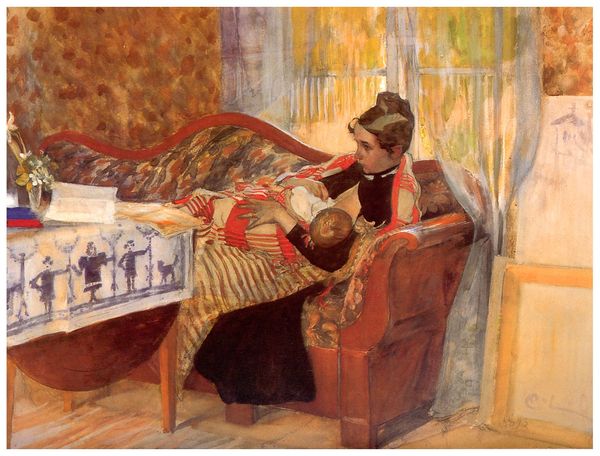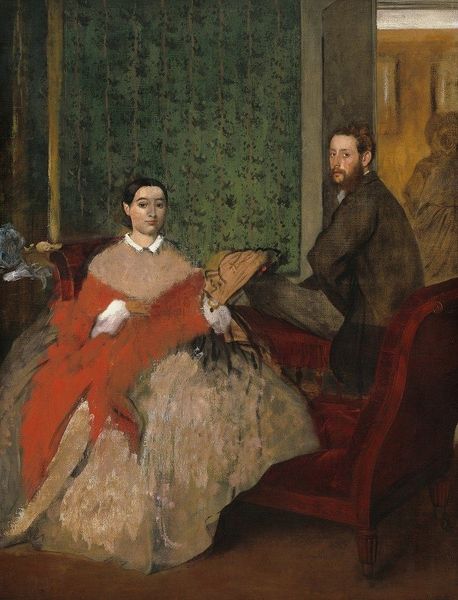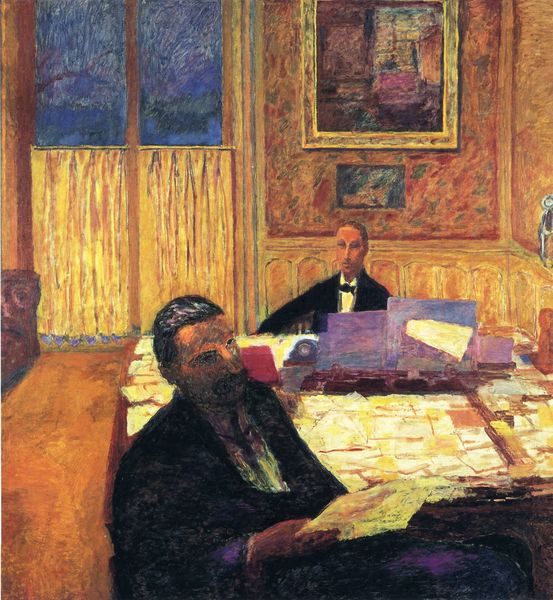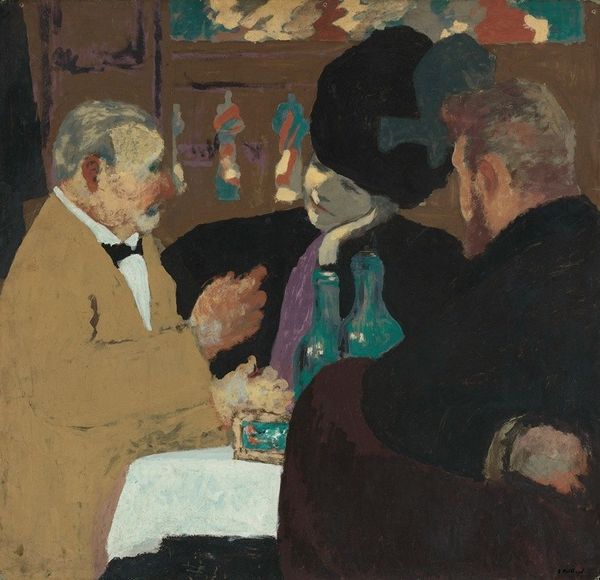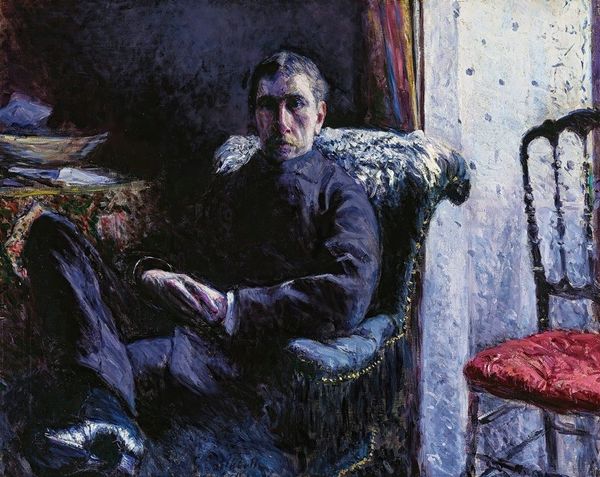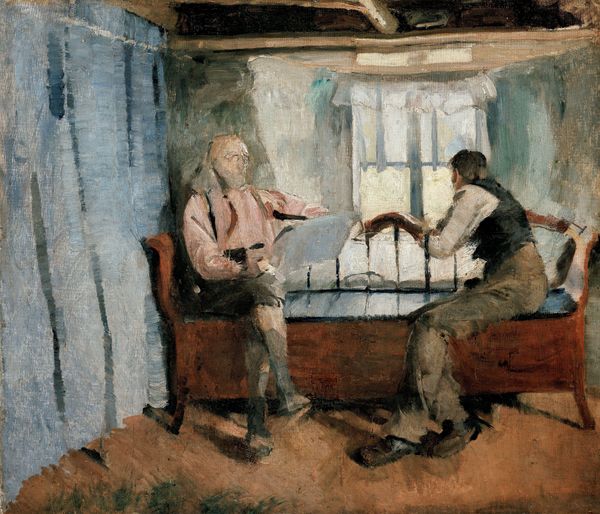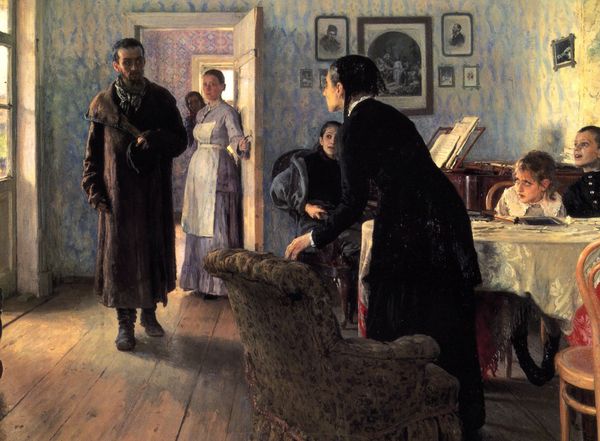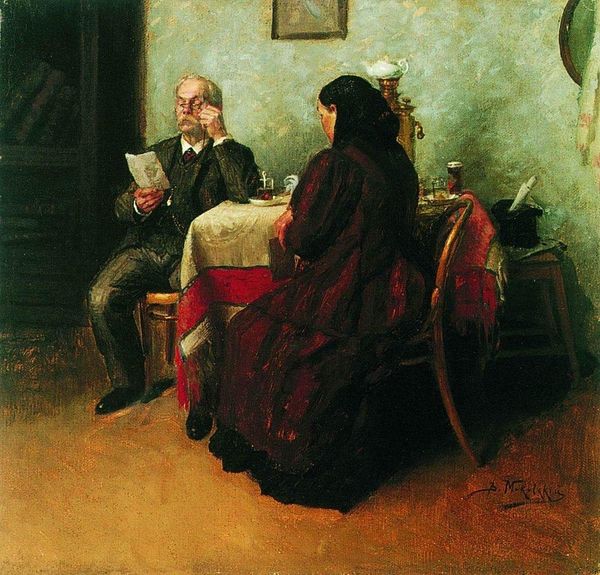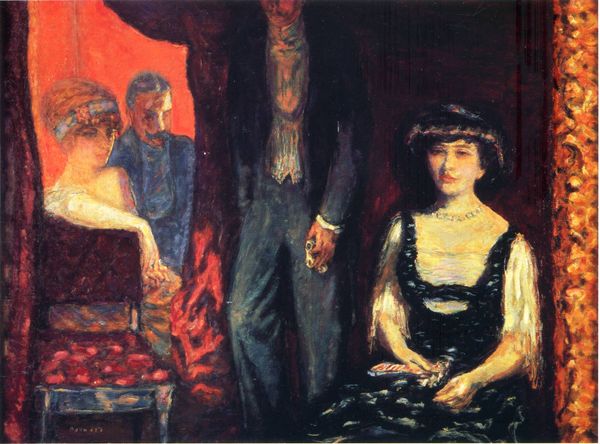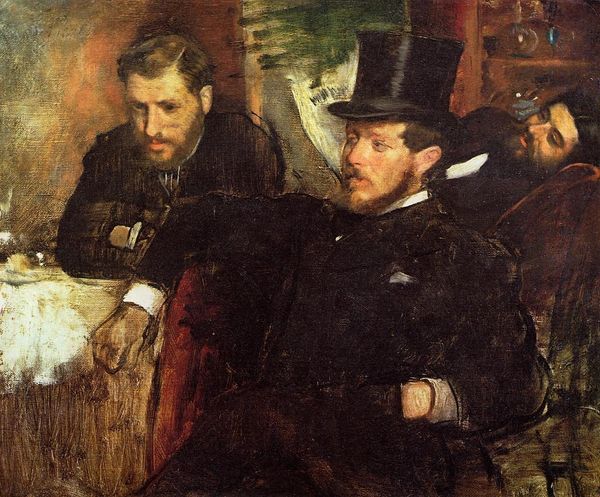
Copyright: Public domain
Edgar Degas’s painting “Pagan and Degas’ Father” presents us with an intimate study of two figures enveloped in a warm, ruddy interior, its tonality rich and inviting. The composition is structured around a series of diagonals and rectangles, forming a complex interplay of forms. Pagan is seen holding a piece of paper, perhaps a score, while Degas’s father gazes intently, their interaction suggesting a shared intellectual or artistic pursuit. The books on the table are not just props but structural elements which add to the mood. Degas uses color and form to challenge conventional portraiture, engaging with the modernist exploration of subjectivity and representation. Through the construction of planes and the flattening of perspective, Degas destabilizes traditional notions of depth and space. The materiality of the paint itself, with visible brushstrokes and layered textures, asserts the painting as an object, a constructed reality. Ultimately, Degas’s canvas engages with the philosophical discourse on perception, inviting us to consider how we construct meaning through visual experience.
Comments
No comments
Be the first to comment and join the conversation on the ultimate creative platform.

